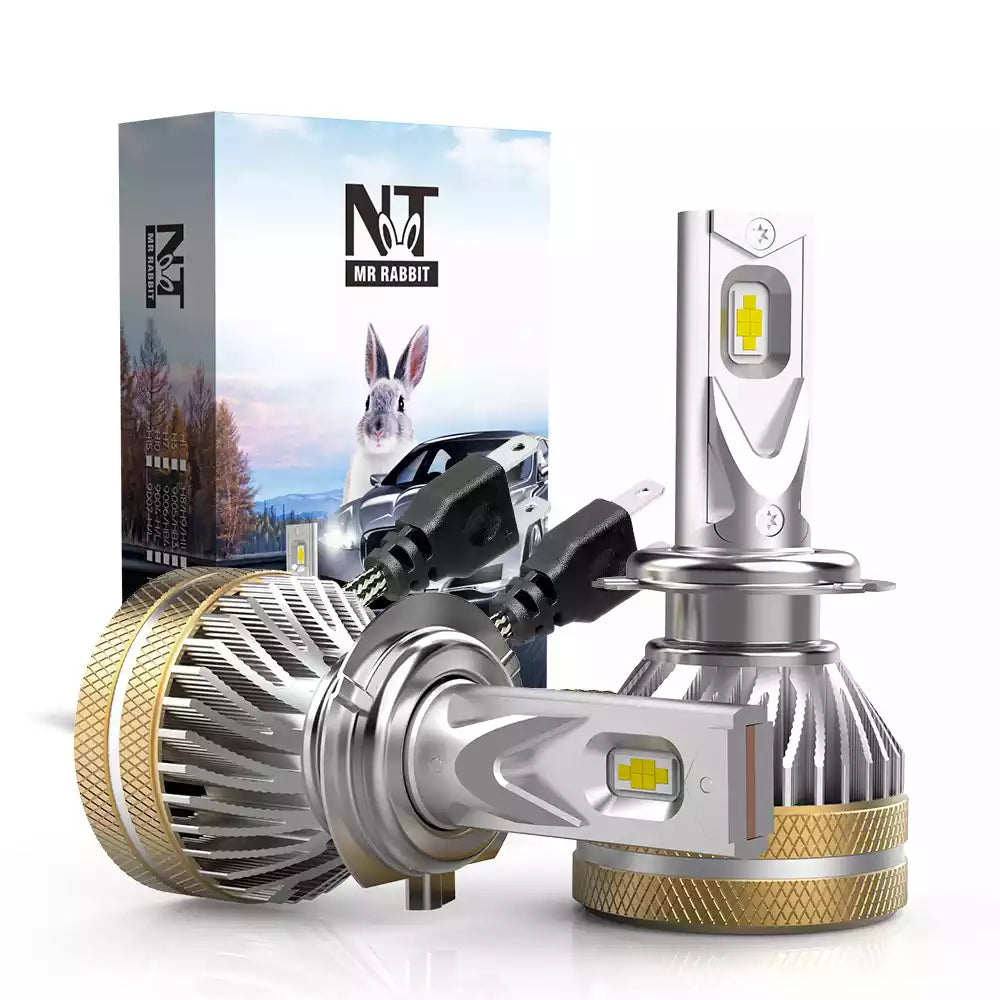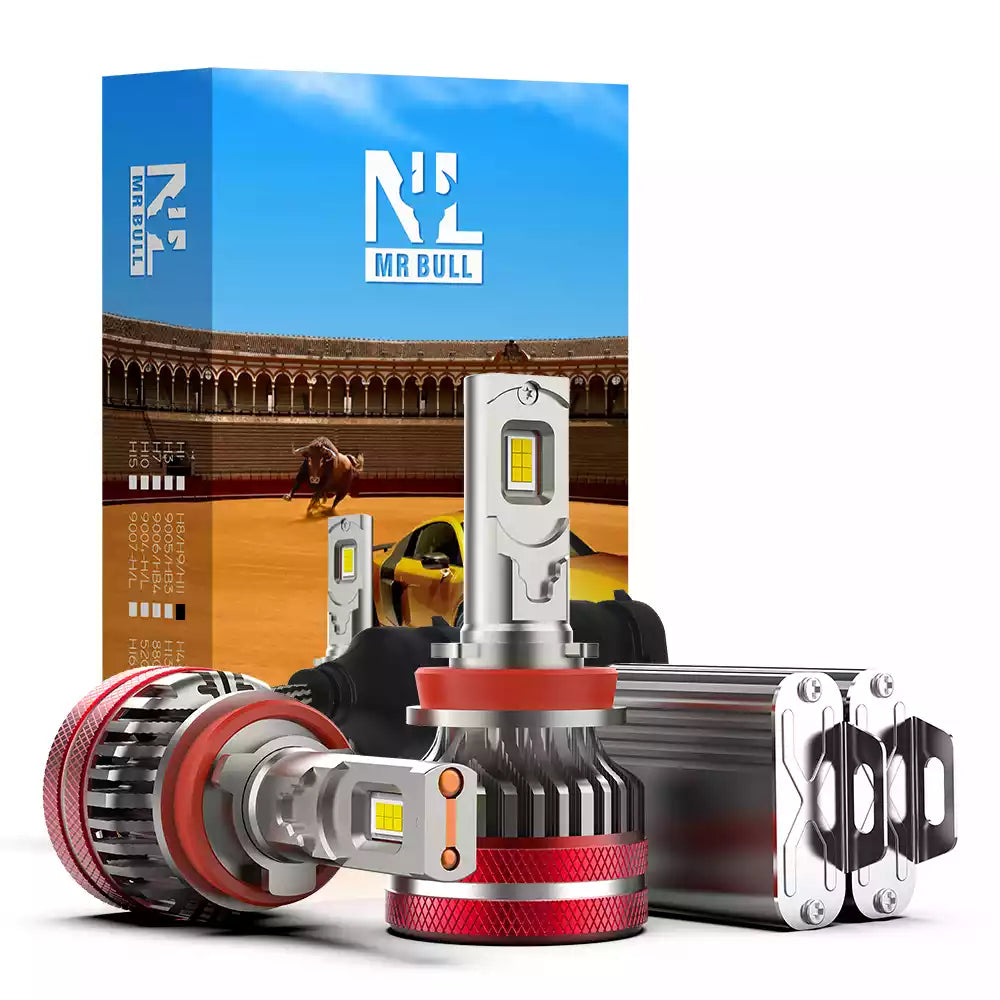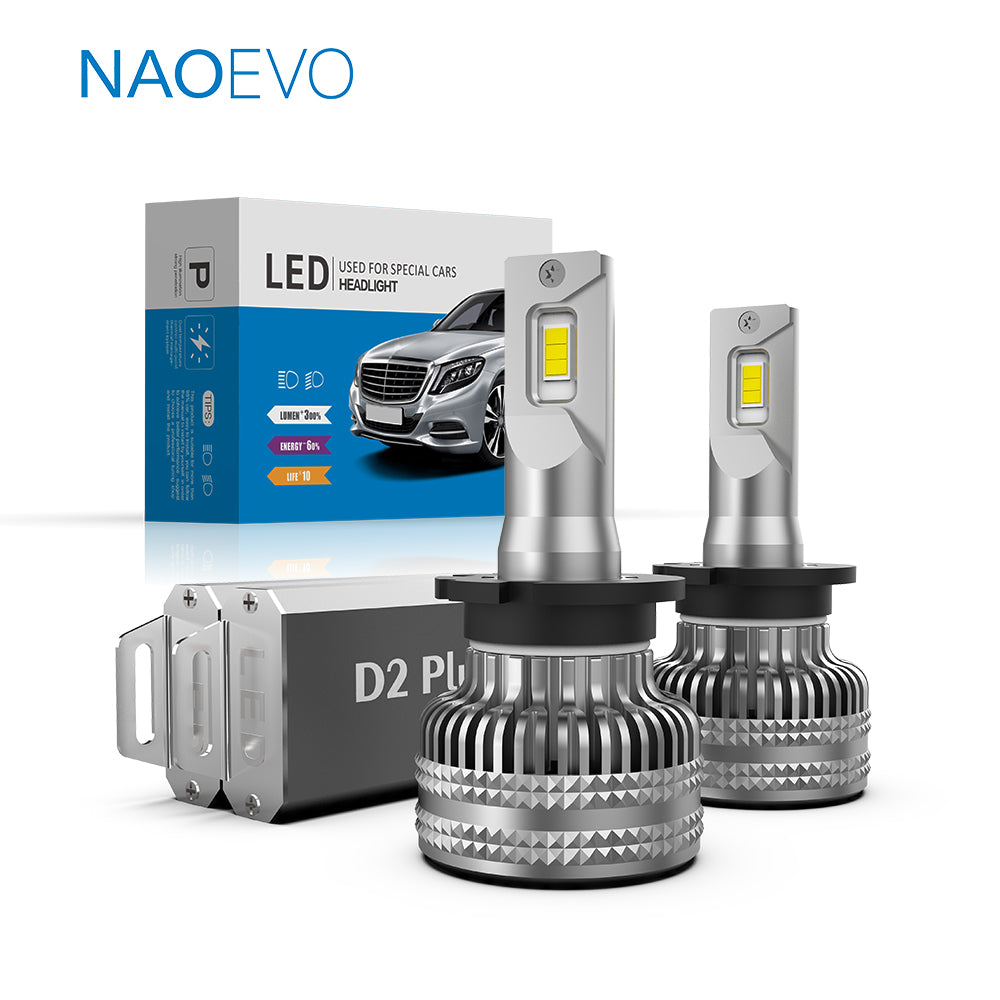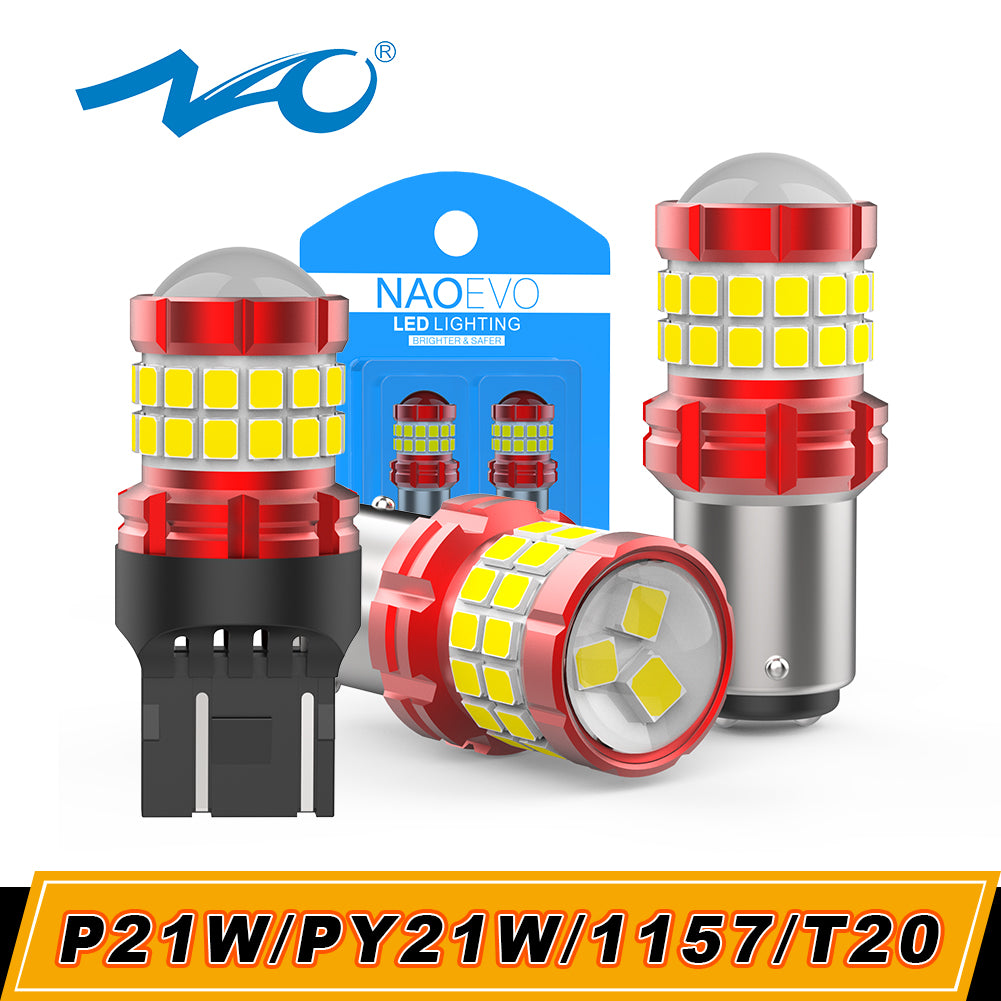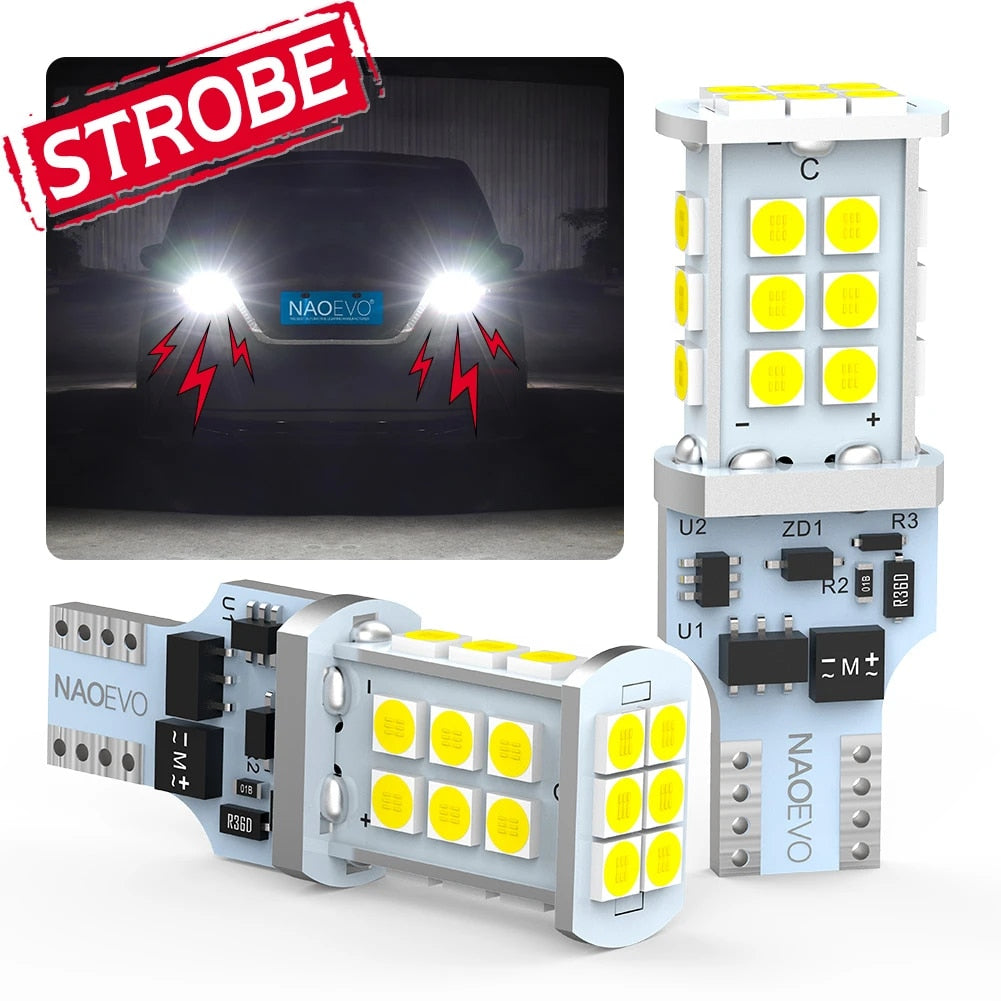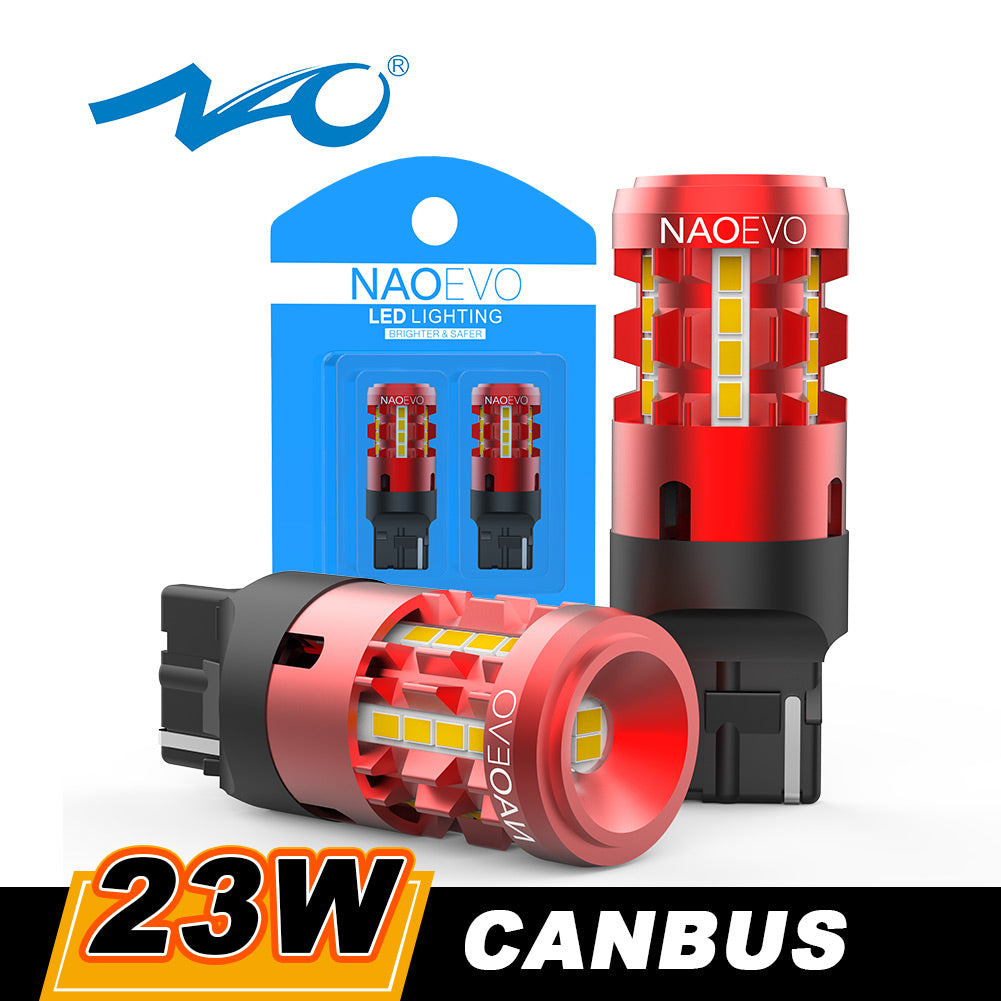Menu
Your cart is empty
Looks like you haven't added anything to your cart yet
Featured products
10 Proven Tips to Choose LED Headlight Bulbs for Your Vehicle
Installing LED headlights has many advantages over HID and halogen, such as brighter light, longer lifespan, and lower energy consumption. There are various LED car bulbs on the market. They are either high power or low power, expensive or low price. What factors should be considered when finding so many brands and types of LED headlight bulbs for the cars. What specs to look for when selecting LED headlight bulbs for car? What are the most important specs for LED headlight bulbs?
These are the most frequently asked questions by customers looking for LED headlight bulbs are also the most strategic questions for auto manufacturers to keep in mind while designing, manufacturing, testing, and improving LED bulbs.
It is said that choosing the best might not be the best choice. Here in this blog, we’ve come up with seven tips to be considered before choosing the most appropriate LED headlight bulb for your car.
|
Content #1 Brightness |
1. Brightness
The first thing to consider is the brightness and light distribution produced by the bulbs. To have brighter bulbs means better visibility for night-time driving. It could be helpful for those who have problems seeing clearly at night.
“Lumen” is a standard unit of measurement for brightness. The brightness of LED headlights will also depend on the wattage of the bulbs. One wattage diode is capable of emitting around 130 lumens. Generally, the higher the lumen rating, the brighter the bulbs. The brighter the headlight bulb, the higher the price.
Most LEDs are designed to reach between 8,000 and 13,000 lumens range whereas 2,000-4,000 lumens are the most common range for typical manufacturer headlights. It would be wise to note that headlight bulb manufacturers advertise a lumen rating such as 12,000; Actually, they are the combined rating for both bulbs - meaning each bulb is 6,000 lumens.
Manufacturers widely use total lumens during the LED bulb design and is often measured by an integrating sphere after the bulb has been made.
2. What are the best light beam patterns?

(NAOEVO ND LED headlight bulb standard high beam and low beam)
Light beam pattern refers to the light angle and shape emitting through the headlight housing. Light beam patterns are as important as brightness and directly related to driving safety. Quality LED headlight bulbs to emit a distinct 45 degrees cut-off line on low beams and focus on high beams.
Low beams without any dark areas have two main benefits. On the one hand, they are helpful to see the oncoming traffic clearly without shining the eyes of other drivers.
On the other hand, perfect light beam patterns are contributed to a broader vision for drivers at night driving. They can see clearly on both sides of the road and react sooner to the accident.
In some right-hand driving countries, the light beam pattern should be lower on the left and higher on the right, and vice versa.
3. LED Radiation Characteristics

There are different LED light chips with different shapes and positions of LED beads. They will all affect the light beam pattern. Quality LED light chips are supposed to mimic the original filament, and the spacing between both sides of beads should be as close to the width of the original filament as possible.
Looking at the above two pictures of the LED headlight, the footprint of the LEDs is too broad, and the space between the two sides of the LED is also too wide. Having spaced out too far and your beam pattern will be out of focus with no hot spot and cause glare to others on the road.

Are you looking for LED headlight bulbs that have a narrow LEDs array? One great example is the NAOEVO S3 LED headlight conversion kit. The metal between LED is extremely thin, allowing the LED position to be as close to the original halogen position as possible.
4. What color temperature is better for driving?

Every light has a color temperature. Color temperature is conveyed in units called “Kelvin.” It can conclude that a Lower Kelvin rating means you have a yellow or orange light, which is called warmer color temperature. A Higher Kelvin rating means you have a whiter and more blue light. It is a cooler temperature.
Everyone perceives color differently, and different color temperatures change your perception of the object you are looking at. The natural light source during daytime belongs to a high color temperature. Our brain will be more energetic and ease eye strain under such a high color temperature illumination.
Usually, the sunlight is measured as a 5800K color temperature. While this 6000K is closed to daylight, providing a noticeable difference in brightness that shows a fantastic driving performance. Therefore, LED headlight bulbs on the market illuminate 5500-6500K color temperatures are better for night-time driving.

NAOEVO S4 Pro LED Bulbs come with 3 colors !

However, in some countries, rainy and foggy days are frequent. In this case, having LED car light bulbs perform well in all bad weather conditions is crucial for road safety. Check out the latest S4 LED headlight bulbs from NAOEVO. These bulbs integrated three colors and a flashing model. They are built to satisfy all your driving demands.
5. LED headlight bulb lifespan
People long ago thought that LED light bulbs didn’t cause much heat as long as they were just a little blinking light on your dashboard. But now, they are trying to create brighter light by consuming much energy. They do create heat!
The lifespan of LED headlight bulbs is highly relevant to the methods of heat dissipation. If the heat dissipation is poor, everything else is empty talk, such as the brightness. When LED headlights are working, most of the heat is generated by the complex circuit board at the base of the diodes.
There are three types of heat dissipation methods for LED headlights: 1. Pure aluminum heat sinks 2. Fan cooling 3. Copper tape cooling.
There are three basic theoretical methods of heat dissipation: 1. Conduction 2. Convection 3. Radiation

LED headlight bulb with pure aluminum heat sink is made from alloy aluminum. It helps to cool down the bulbs by thermal radiation of itself. More significant heat sink, then better heat radiation.
This fanless LED headlight bulb with a pure aluminum heat sink maintains a stable cooling capacity, but the power of the bulbs should be designed as low as possible, and the brightness will also decrease.

LED headlight bulbs with copper-strip heat sinks are made from copper wire with tin coating on the surface. Copper tape fins and wings are adjustable to maximize the area for heat dissipation.
However, all the wings can not be squeezed together, or the cooling performance will decrease. Besides, they are not 100% attached to the bulb body and are hard to install in the headlight housing.

LED headlight bulbs with high-speed fans are the most common cooling methods for headlight bulb makers. They take the initiative to dissipate the heat, which can ensure the regular operation of high-power bulbs.
The fan quality is vital for the lifespan of LED bulbs. Otherwise, the bulbs also cannot keep being used when the fan is broken.

(Max3 LED with heat pipe cooling solution providing three times higher thermal capability)
Quality LED headlight bulbs are capable of lasting over 50,000 hours. The premise is that they have reliable heat conduction. Thus, NAOEVO Max3 LED headlight bulbs have made a remarkably succeeded in this aspect. Max3 LED bulbs achieve efficient heat dissipation by being equipped with dual copper heat pipes technology, making an excellent balance of high brightness and cooling.
6. LED Headlight Bulb Brand
There are many poor-quality LED headlight brands on the market. Some of the cheap LED kits feature overclocked chip sets that allow them to produce a high lumen and create a large amount of heat for a very short time. It doesn’t take long for the whole headlight system to overheat and fail. In the description, they may claim the bulbs have 50,000 hours lifespan, but in fact, they can only last for 1,000 hours or less.
Buying LED headlights from a reliable brand is also a guarantee of product quality. Such as Osram and Philips are all well-known lighting companies with a centenary year of brand foundation. They offer five years quality warranty for some LED car light bulbs, but they will cost you an arm and a leg.

If you are looking for high-quality LED headlight bulbs at a reasonable price. NAOEVO is the best choice for you! They are one of the largest LED car light bulb manufacturers & suppliers in China. By introducing lots of high-tech machines for manufacturing first-class LED light bulbs in various styles, their products are widely exported to the USA, Europe, Southeast Asia, and South America and have obtained many customers’ high praises.
7. LED Headlight Bulb Chip
Another essential factor to take note of when purchasing LED headlights is the type of chip that is utilized. The LED chip is a core component of the entire LED headlight bulb, with the development of LED lighting and the high demands from customers. Many manufacturers strive to improve and innovate LED chips. Picking the correct type of LED chips allows the bulb to maximize brightness with the least amount of energy. Cree, COB, CSP, ZES, and ETI FC (flip-chip) are the most common available chips for LED headlight bulbs.

Cree
As a company since 1987, Cree has been producing some of the best LED lightings on the market. While the original Cree no longer exists, its top-quality LED chips remain to exist on the market. These chips are designed with a small bubble for concentrating light.
Pros: Light efficiency, lower temperature
Cons: Cause scattered light beam
COB (Chip on board)
COB refers to the mounting of a bare LED chip in direct contact with a substrate to produce LED arrays. COB LED technology can significantly reduce the energy consumption of LED arrays while keeping light output constant. Another considerable merit of the COB chip is that its devices have only one circuit and two contacts for the entire chip, regardless of the number of diodes.
Pros: High illuminating power, homogeneous lighting
Cons: Poor thermal resistance, high price
CSP (Chip Scale Package)
CSP is defined as a LED package with a size equivalent to a LED chip. Despite its small size, it can produce high-performance light. Its superior quality without soldered wire connections or need for space makes it excellent in reducing thermal resistance and reducing possible failure points.
Pros: Micro-sized, medium power
Cons: Difficult in processing, not suitable for high-power products, high price
ZES
Lumileds Luxeon ZES once belonged to Philips. Designed with a simple inner structure, ZES has outstanding color consistency, luminance, flux density, and design flexibility for lighting solutions. ZES chip has a lower defective rate than other types of chips.
Pros: small size but high luminance, good to mimic the filament in halogen bulbs, good heat dissipation
Cons: Very expensive
ETI FC (Flip-chip)
Flip-chip is a newly patented technology. This type of chip mounts the LED diode upside down, which both shortens the production process and results in a higher heat dissipation rate. Flip-chip has become an increasingly popular choice of LED headlight bulbs.
Pros: High quality; better heat transmission; perfect light beam pattern; affordable price.
Cons: Higher requirement for the manufacturing process, difficult to maintain.
Other Factors
Bulb Size
Besides the above-mentioned tips, there’s one of the essential factors to think over when buying car headlights - whether the model fits the vehicle or not. In most cases, headlight bulbs are compatible with a wide range of models. The bulb models’ numbers are mainly divided into a single beam and dual beam functions. Still, confused about this section? Look for our previous blog, High Beams vs. Low Beams: Any Difference? to get more answers.
You can check out your car bulb size by looking at the user manual or searching the Car Bulb Finder tool for help.
The Legality of LED Bulbs
Every country has different laws that determine what makes the car bulb road legal. Consumers need to ensure that the headlights are permitted by law, road safety, and appropriate for traveling. There are also laws regarding the color of your headlights. Regardless of the region you live in, the law requires your headlight to be yellow or white. Some drivers may find that certain bulbs produce blue lights, which makes them non-road legal.
Upgrading with LED car light bulbs should also ensure that it carries RoHs, CE, and E-mark certifications, which comply with European standards. Or in the United States, it needs to be DOT-Compliant to follow US regulations.
IP Rating
The IP rating of a bulb determines the level of protection it has against dirt or water. The higher the IP rating level, the better the water resistance. The ratings most widely accepted as “waterproof” are IP65, IP67, and IP68. The difference between them is the degree of liquid ingress protection they offer.
IP65 Rating: Gives protection against low pressure as well as c
ondensation.
IP67 Rating: Offer more substantial protection against liquid ingress, and protect against temporary submersion.
IP68 Rating: capable of continuous immersion in water.
Conclusion
We hope that the above factors can this article can help you to find the best and the most appropriate auto LED light bulb for your car.
FAQs
Q1: What factors will decide the brightness of LED bulbs?
Lumens and lux. Lumens measure the amount of light output of LED bulbs. The higher the lumens, the brighter the light is. And luminous flux is the measure of the perceived power of light by the human eye. Besides, the brightness also depends on the wattage of the bulbs.
Q2: What is a “Canbus Error” problem?
Canbus serves as a function to detect the faults in your car automatically. When you replace halogen with a LED bulb, the car may not be recognized immediately and signal message on the dashboard. It seems like sending an “error” message.
Q3: What is an error-free LED bulb?
An error-free LED bulb means that the LED lamp is equipped with either resistor or
have an external decoder (Canbus driver) to mimic the power draw of the original
halogen bulbs to trick the computer into thinking that the bulbs are drawing the same rate as halogen, so that the vehicle won’t throw any error message.
Q4: Which LED headlight brands are the best choice for the car?
Any brand of LED light bulb will do good as long as they are produced by a reliable manufacturer. Usually, we advise buying LED bulbs from some well-known brands such as Osram, Philips, or NAOEVO as they are the most trustworthy automotive lighting manufacturers.
Q5: What is the highest-lumens LED headlight bulb?
The brightest LED headlight bulb on the market is - NAOEVO ND series LED headlight kit. They usually provide 70W 8400LM per bulb, that is 140W 16,800LM per set. They produce not only high brightness but also have an outstanding balance of beam pattern and lifespan.
Q6: What is the dual-filament bulb?
One bulb with two filaments produces either low beams or high beams. Such as H4, H13, 9004, and 9007 are all dual beam headlight bulbs.
Q7: Is it worth switching from halogen to LED headlights?
Switching your halogen to LED headlights has many benefits. LED headlight bulbs are brighter and have a longer lifespan, better heat dissipation, and light efficiency than stock halogen bulbs.
Pros:
1. Energy-Efficient
2. Longer lifespan
3. Better light beam pattern
4. Better cooling system
5. Money-saving
- Choosing a selection results in a full page refresh.








